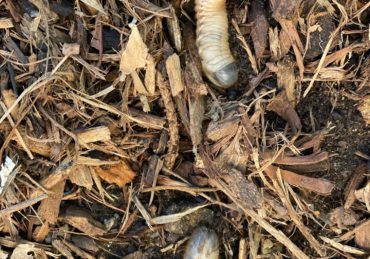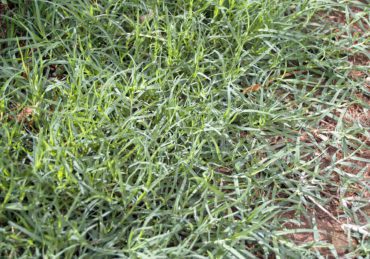Gardeners can effectively replace traditional landscape fabric with several sustainable alternatives. Cardboard and newspaper offer biodegradable weed barriers that enrich soil as they decompose. Organic mulches, such as straw and wood chips, not only block sunlight to prevent weeds but also enhance soil health. Ground cover plants like clover and creeping thyme effectively suppress weeds while promoting biodiversity. Burlap serves as a reusable option that allows air and water penetration, supporting healthy soil. Each alternative has unique benefits that contribute to a thriving garden ecosystem, and exploring deeper insights can enhance your gardening strategy.
Why Seek Alternatives to Landscape Fabric?
The search for alternatives to landscape fabric arises from concerns about its environmental impact and long-term inefficiency. Non-biodegradable materials contribute to pollution while inhibiting soil health and essential biological processes. By exploring sustainable options, gardeners can foster healthier ecosystems and enhance soil quality over time.
Easily hire the best lawn & landscape pros working in your neighborhood.
Environmental Impact
Numerous environmental concerns arise from the use of traditional landscape fabric, prompting the exploration of more sustainable alternatives. Conventional landscape fabric is often made from non-biodegradable polypropylene, contributing to long-term pollution and disrupting the soil ecosystem. This disruption hampers soil health by blocking essential nutrients and moisture, ultimately harming beneficial organisms such as earthworms. In contrast, biodegradable landscape fabric options like cardboard or newspaper decompose over time, enriching the soil and promoting an environmentally friendly garden ecosystem. By utilizing organic materials for weed suppression, gardeners can enhance biodiversity while avoiding the detrimental effects of microplastics that emerge from synthetic fabrics. Embracing these alternatives supports a healthier environment and aligns with eco-conscious gardening practices.
Inefficiency Over Time
Over time, traditional landscape fabric proves to be inefficient due to its limited lifespan and ongoing maintenance challenges, prompting the need for more sustainable alternatives. While initially effective in suppressing weeds, landscape fabric typically lasts only 2-3 years, requiring costly replacements. Moreover, it often allows weed seeds to germinate on top, leading to persistent maintenance issues. Unlike organic mulch, which enriches the soil and promotes soil health as it decomposes, landscape fabric fails to contribute to nutrient cycling. In addition, it can inhibit water and air penetration, adversely affecting plant roots. By exploring landscape fabric alternatives such as organic mulch, cardboard, or natural ground covers, gardeners can effectively prevent weeds while enhancing both the ecosystem and the aesthetic value of their gardens.
Landscape fabric deteriorates over time due to exposure to sunlight, weather, and physical wear, leading to tears and thinning. As it breaks down, weeds can start growing through or above the fabric, diminishing its effectiveness. This degradation often requires frequent replacement, adding to maintenance costs and labor. In some cases, persistent weeds may push through seams or gaps in the fabric, further reducing its ability to control unwanted plant growth in the garden.
Cardboard The Recyclable Weed Barrier
Cardboard serves as an effective and eco-friendly weed barrier, offering gardeners a sustainable solution for weed suppression. Proper application involves layering moistened cardboard beneath organic mulch to enhance its function and promote soil moisture retention. This method not only suppresses weeds but also enriches the soil as the cardboard breaks down, making it a cost-effective choice for environmentally conscious gardeners.
How to Use Cardboard in Your Garden
To use cardboard as a weed barrier, gardeners should first remove any packing tape, labels, or plastic-coated sections. Next, flatten the cardboard and layer it over the garden bed or area where weeds are a concern. Overlap the edges of the cardboard sheets by a few inches to ensure no gaps are left where weeds might push through. Once the cardboard is in place, thoroughly water the area to help it settle into the soil and create a tight seal. To improve the aesthetic and functionality of the garden, cover the cardboard with a layer of organic mulch, such as wood chips, straw, or compost. Regularly monitor the area for any new weed growth, replacing the cardboard as necessary to maintain effective weed suppression throughout the growing season.
Benefits of Using Cardboard
Utilizing cardboard as a recyclable weed barrier offers numerous environmental and practical benefits for gardeners seeking sustainable solutions. This biodegradable option effectively suppresses weeds while decomposing, enriching soil health with organic matter. Cardboard is a cost-effective alternative, often available for free, making it accessible for budget-conscious gardeners. For best results, it should be moistened and overlapped in layers, ideally used alongside organic mulch to enhance its effectiveness. As it breaks down, cardboard fosters the growth of beneficial microorganisms and improves soil structure, promoting a healthier ecosystem. By employing cardboard as a weed barrier, gardeners not only reduce plastic waste but also engage in sustainable gardening practices that support environmental stewardship and enhance overall garden health.
Newspaper A Readily Available Mulching Option
Newspaper serves as a practical and sustainable alternative for weed control in gardening. By understanding how to effectively use newspaper layers and weighing its advantages and disadvantages, gardeners can enhance their mulching strategies. This discussion will investigate the ideal application methods and the pros and cons associated with using newspaper as a mulching option.
How to Use Newspaper for Weed Control
A practical and eco-friendly solution for weed control involves employing newspaper as a biodegradable barrier that effectively suppresses unwanted growth while enriching the soil. To utilize newspaper, layer 4-8 sheets thick, ensuring they are overlapped to block sunlight effectively. It is essential to use non-glossy, black-and-white newspaper to avoid harmful chemicals leaching into the soil. Before applying mulch on top, wet the newspaper layers; this enhances adhesion and moisture retention, further aiding in weed control. As the newspaper decomposes, it enriches the soil with organic matter, promoting a healthier garden ecosystem. This method not only prevents weeds but also contributes to the overall sustainability of your gardening practices.
Easily hire the best lawn & landscape pros working in your neighborhood.
Pros and Cons of Newspaper
The use of newspaper as a mulching option presents both significant advantages and potential drawbacks for gardeners seeking effective weed control. This biodegradable material is a cost-effective choice that can provide excellent weed suppression when layered with 4-8 sheets to block sunlight. As it decomposes, newspaper allows moisture and air to penetrate, contributing to soil enrichment with organic matter. However, it is important to avoid glossy or colored newspaper, as these may contain harmful inks. Furthermore, the newspaper should be moistened before application to enhance adhesion and reduce displacement by wind. Regular monitoring is essential, as the newspaper may require replenishment or replacement every few months due to decomposition and exposure to the elements.
Using newspaper as an alternative weed barrier is a cheap, accessible, and biodegradable option that recycles materials many gardeners already have on hand. It effectively suppresses weeds while breaking down naturally, enriching the soil with organic matter. However, newspaper can blow away easily, especially in windy areas, if not properly weighed down with mulch or water. Additionally, it decomposes relatively quickly, meaning it may need to be replaced more frequently than other materials. Despite these drawbacks, newspaper remains a popular, eco-friendly solution for gardeners seeking a sustainable alternative to weed fabric.
Mulch A Natural Barrier with Soil Benefits
Mulch serves as a natural barrier that effectively suppresses weeds while offering substantial benefits to soil health. Various types of mulch, including wood chips and straw, can be utilized to optimize these advantages, and understanding the proper application techniques is essential for achieving desired results. This discussion will investigate the different types of mulch suitable for weed suppression and the best practices for effective application.
Mulch is a traditional and effective alternative to landscape fabric, offering numerous benefits for garden health and maintenance. Various types of mulch, including wood chips, bark, and pine needles, provide an excellent layer of protection against weeds while enhancing the overall quality of the soil. By blocking sunlight, mulch effectively suppresses weed growth, preventing unwanted plants from competing with your vegetable garden.
Types of Mulch for Weed Suppression
Organic mulches, including straw and wood chips, serve as effective barriers against weed growth while simultaneously enriching the soil with essential nutrients as they decompose. These organic mulches not only block sunlight, preventing weeds from establishing, but also contribute to soil health by adding organic matter as they break down. A layer of mulch 2-4 inches thick can greatly enhance moisture retention and regulate soil temperature, promoting plant health. Furthermore, options like pine needles and shredded leaves are excellent free choices that prevent soil erosion and foster a healthy ecosystem. By utilizing mulch to create a natural barrier, gardeners can reduce reliance on chemical herbicides, supporting a more sustainable and eco-friendly gardening approach.
How to Apply Mulch Effectively
Applying mulch correctly is essential for maximizing its benefits in moisture retention, weed suppression, and soil health. To achieve ideal results, apply a layer of 2-4 inches of organic mulches, such as wood chips or straw, around plants. This thickness guarantees effective temperature regulation and prevents sunlight from reaching the soil, thereby minimizing weed growth. Spread the mulch evenly while maintaining a few inches of space from plant stems to prevent rot and pest issues. Prior to application, consider moistening the mulch to enhance its settling and weed suppression capabilities. Regularly replenish the mulch every 1-2 years as it decomposes to maintain its effectiveness and continue enriching the soil. Proper application will foster a thriving ecosystem in your garden.
Ground Cover Plants Nature’s Living Mulch
Ground cover plants serve as an effective alternative to landscape fabric, offering both aesthetic and functional benefits. Selecting the right varieties, such as clover and creeping thyme, can enhance soil health while naturally suppressing weeds. Moreover, these plants contribute to biodiversity and soil stability, making them a valuable component of sustainable landscaping practices.
Easily hire the best lawn & landscape pros working in your neighborhood.
Choosing the Right Ground Cover Plants
Selecting suitable ground cover plants can greatly enhance garden aesthetics while providing effective weed suppression and soil health benefits. These plants, such as creeping thyme and clover, effectively block sunlight, preventing weeds from establishing and thriving. Moreover, many ground cover varieties are low-maintenance, making them ideal for filling neglected spaces in gardens. Opting for native ground cover not only promotes local biodiversity but also attracts beneficial insects and pollinators, enriching the garden ecosystem. In addition, ground cover plants contribute to soil health by improving soil structure and moisture retention as they grow and decompose. By carefully choosing the right ground covers, gardeners can create a vibrant, sustainable landscape that fosters both beauty and ecological balance.
Benefits of Ground Cover Plants
Utilizing ground cover plants serves as an effective strategy for enhancing garden health and aesthetics, acting as nature’s living mulch to suppress weeds and enrich the soil. These plants effectively block sunlight, thereby minimizing weed growth and reducing reliance on synthetic herbicides. Moreover, ground cover plants greatly improve soil health by enhancing aeration and contributing organic matter as they grow and decompose. Many varieties are drought-tolerant, aiding in moisture retention and decreasing irrigation needs. In addition, they create habitats for beneficial insects and wildlife, promoting biodiversity and fostering natural pest control within the garden ecosystem. With their diverse colors and textures, ground cover plants not only serve functional purposes but also raise the visual appeal of landscaped areas.
Burlap A Reusable and Biodegradable Weed Barrier
Burlap serves as an effective, reusable, and biodegradable weed barrier that offers numerous benefits for gardeners. Its ability to allow air and water penetration while suppressing weeds makes it a practical choice for various gardening applications. However, it is essential to weigh the pros and cons of burlap to determine its suitability for your specific landscaping needs.
Using Burlap in Your Garden
Consider burlap as an effective, environmentally friendly alternative for creating a biodegradable weed barrier in your garden. Made from jute plant fibers, burlap not only blocks weed growth but also allows for excellent water and air penetration, promoting healthy soil aeration. This reusable option can be layered and secured in place, working best when combined with organic mulch to enhance its effectiveness. As burlap decomposes, it enriches the soil with organic matter, supporting beneficial microorganisms and improving overall soil health. By choosing burlap, you contribute to a sustainable gardening practice that reduces waste and enhances the ecosystem, making it a valuable addition to your garden’s design and maintenance strategy.
Pros and Cons of Burlap
Evaluating the pros and cons of burlap as a weed barrier reveals its effectiveness as a biodegradable and reusable option that supports both soil health and moisture retention. Made from jute plant fibers, burlap is an eco-friendly material that decomposes, enriching the soil while providing essential weed control. Its excellent air and water permeability guarantees that moisture reaches plant roots, promoting ideal growth. However, the cost of burlap may be higher than alternatives like cardboard or newspaper, potentially limiting its accessibility for some gardeners. Despite this, burlap can be reused across multiple seasons, making it a sustainable choice when paired with organic mulches, thereby enhancing its weed-suppressing capabilities and contributing positively to overall soil health.
How to Choose the Best Landscape Fabric Alternative for Your Garden
Selecting the most suitable landscape fabric alternative for your garden involves evaluating various options that align with your gardening goals and the specific conditions of your environment. Consider biodegradable options like cardboard or newspaper, which effectively suppress weeds while enriching the soil as they decompose. Organic mulches, such as straw or wood chips, also serve a dual purpose by retaining moisture and improving soil health while providing long-lasting weed suppression. Furthermore, living ground covers like clover or creeping thyme enhance aesthetics and promote biodiversity by blocking sunlight to prevent weed growth. Assess the environmental impact of each choice, prioritizing solutions that foster soil health and biodiversity over synthetic alternatives that may harm beneficial soil organisms.
Conclusion
The five best landscape fabric alternatives are cardboard, newspaper, mulch, ground cover plants, and burlap. Landscape fabric isn’t biodegradable, making the many alternatives better options for gardeners turning to eco-friendly and sustainable options. Cardboard and newspaper are affordable, biodegradable options that keep weeds at bay and improve soil health as they decompose. Mulch, such as wood chips or bark, prevents weeds, retains moisture, and enriches the soil. Adding a layer of mulch to your garden also helps with erosion control in addition to a weed problem. Ground cover plants like clover and creeping thyme create a natural weed barrier while promoting biodiversity. Burlap provides a sturdy, reusable option that supports healthy root growth. By choosing these eco-friendly alternatives, gardeners can adopt sustainable practices that promote long-term weed control, soil vitality, and a thriving garden ecosystem.




